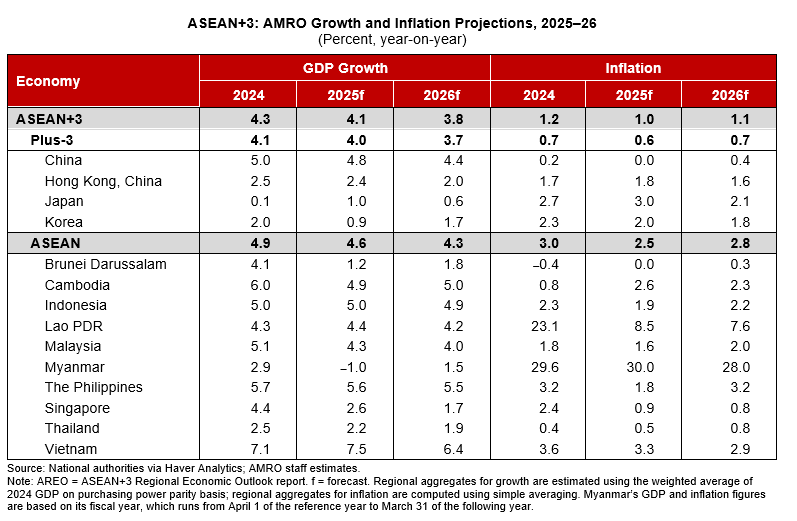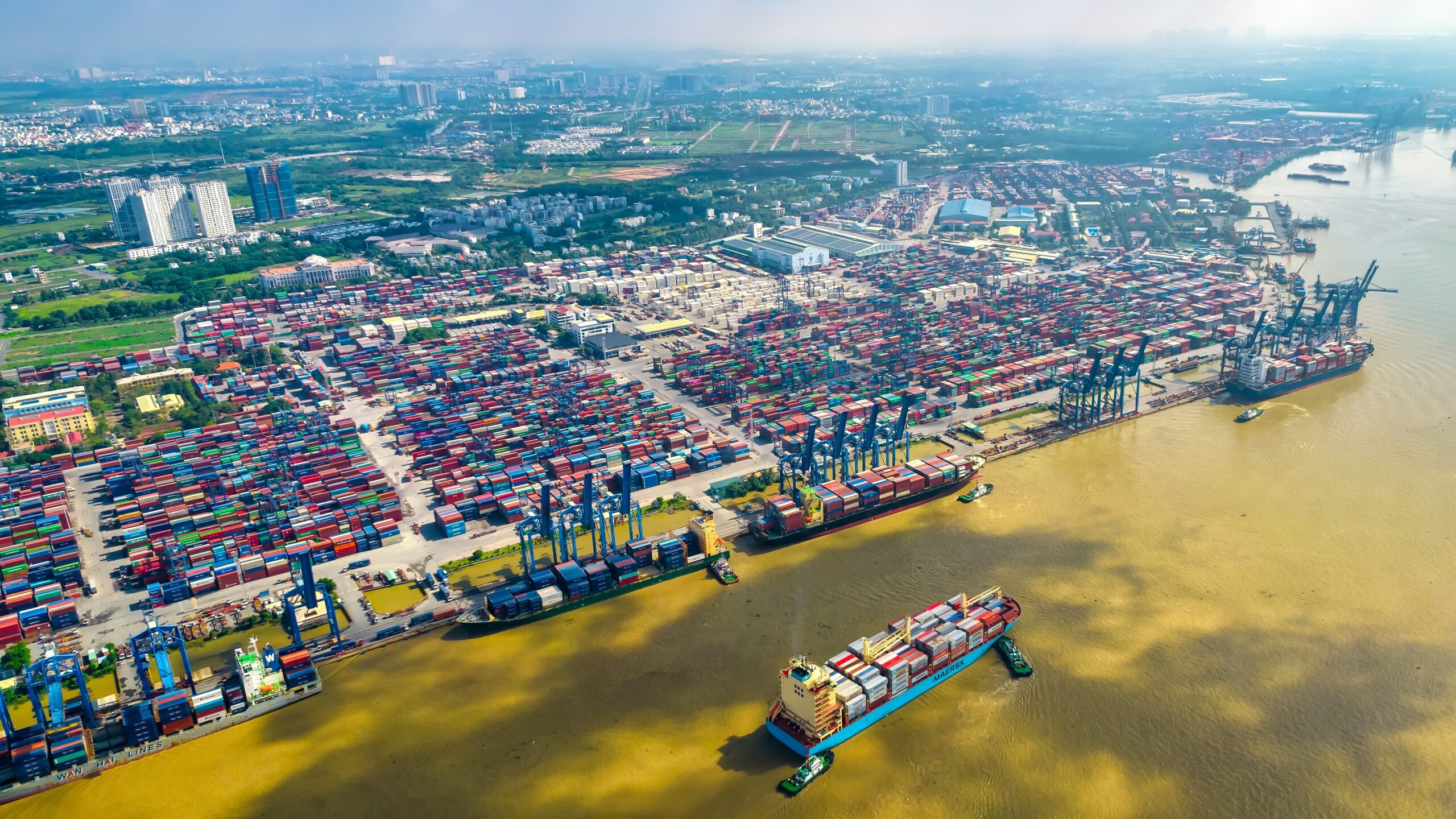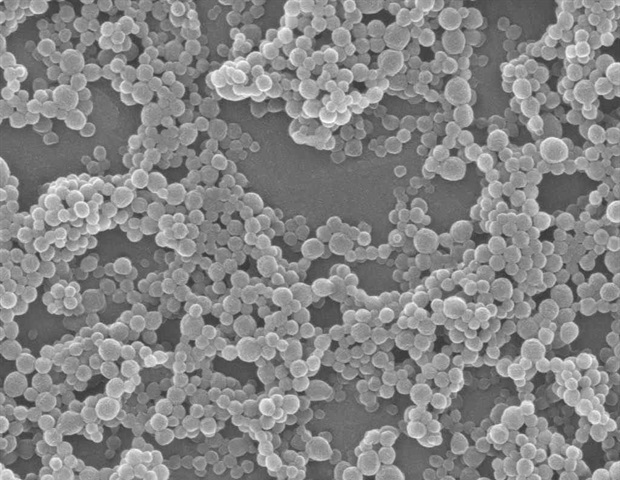In the form of a ‘nasal spray’, tiny gold particles act as carriers, delivering a treatment directly to the brain: developed by scientists at the Università Cattolica Rome campus/Fondazione Policlinico Universitario A. Gemelli…
Blog
-

Meghan Markle Just Stepped Out With The Most Incredible Glow
Meghan Markle, Duchess of Sussex, attends the Balenciaga Spring/Summer 2026 show as part of Paris Fashion Week on October 04, 2025, in Paris, France. (Photo by Arnold Jerocki/Getty Images for Balenciaga) There was no missing Meghan…
Continue Reading
-

Pakistan: Ambush by TTP near Afghanistan border claims lives of 11 soldiers
A deadly ambush by Tehreek-e-Taliban Pakistan (TTP) fighters near the Afghan border in the early hours of Wednesday claimed the lives of at least 11 Pakistani soldiers, including two senior officers – Maj Tayyab Rahat and Lt Col Junaid Arif.The…
Continue Reading
-

ASEAN+3 Remains Resilient Amid Heightened Global Uncertainties – ASEAN+3 Macroeconomic Research Office
SINGAPORE, October 9, 2025 – The ASEAN+3 Macroeconomic Research Office (AMRO) today released its ASEAN+3 Financial Stability Report (AFSR) 2025 and the ASEAN+3 Regional Economic Outlook (AREO) October Update, highlighting the region’s broad resilience in the face of heightened uncertainties driven by US trade policy shifts and geopolitical tensions.
Growth in the ASEAN+3 region is projected at 4.1 percent in 2025 and 3.8 percent in 2026, an upward revision from July’s forecast, supported by robust first-half performance and stronger-than-expected export momentum. Market pressures have gradually eased since peaking in April following the announcement of the “Liberation Day” tariffs.
“While intra-regional trade and domestic demand have become increasingly important growth drivers across ASEAN+3, the region remains deeply connected to the global financial system and is therefore not insulated from global shocks,” said AMRO Chief Economist Dong He. “Overall, the region’s financial system remains resilient, although pockets of vulnerabilities persist.”
Export-oriented corporate sectors—particularly smaller firms with high exposure to US demand—may face pressures on profit margins amid shifting trade dynamics. Inflation pressures in the US could persist amid higher import tariffs, complicating the Fed’s monetary policy stance and potentially triggering spillovers to other parts of the world. Additionally, growing uncertainty around the US dollar’s safe-haven status could further fragment the global financial landscape.
Despite these challenges, ASEAN+3 economies remain well-positioned to navigate global headwinds. Well-calibrated policy mixes and strong fundamentals—including robust banking systems, deepening financial markets, ample foreign reserves, and available policy space—have provided critical buffers. With inflation largely subdued and expectations well-anchored in most economies, central banks can maintain accommodative monetary policy to support growth.
At the same time, macroprudential tools, along with foreign exchange and capital flow management measures, offer additional safeguards to maintain financial stability and mitigate external spillovers. However, AMRO underscores that support should be carefully targeted to vulnerable sectors and deployed prudently to preserve policy space amid elevated external uncertainty.
Beyond near-term risks, the region is undergoing deeper structural transitions. Most notably, the rapid digitalization of financial services presents opportunities for greater financial inclusion and efficiency, while also introducing new challenges to financial stability.
“Digitalization of the banking sector is reshaping the market structure, offering new pathways for inclusion and efficiency,” said Runchana Pongsaparn, AMRO Group Head for Financial Surveillance. “But it also alters the nature and distribution of financial stability risks. Policymakers must adopt a multi-pronged strategy that promotes innovation while managing risks, calibrated to the maturity of each market segment.”
As ASEAN+3 manages near-term uncertainties, AMRO emphasizes the importance of reinforcing policy frameworks, improving transparency, and deepening domestic markets and buffers to mitigate spillover risks from external shocks.
Dr. He concluded: “With coordinated actions and deeper financial cooperation and integration, ASEAN+3 can turn today’s challenges into tomorrow’s opportunities, and emerge stronger, more connected, and more resilient.”
For more insights, refer to AMRO’s latest flagship publications: the ASEAN+3 Financial Stability Report 2025, and the ASEAN+3 Regional Economic Outlook October Update.
Also available in Chinese | Japanese | Korean
About AMRO
The ASEAN+3 Macroeconomic Research Office (AMRO) is an international organization established to contribute toward securing macroeconomic and financial resilience and stability of the ASEAN+3 region, comprising 10 members of the Association of Southeast Asian Nations (ASEAN) and China; Hong Kong, China; Japan; and Korea. AMRO’s mandate is to conduct macroeconomic surveillance, support regional financial arrangements, and provide technical assistance to the members. In addition, AMRO also serves as a regional knowledge hub and provides support to ASEAN+3 financial cooperation.

Continue Reading
-

Quarterly Update of the ASEAN+3 Regional Economic Outlook (AREO) – October 2025 – ASEAN+3 Macroeconomic Research Office
ASEAN+3 Remains Resilient Amid Heightened Global Uncertainties
In the October 2025 update of the AREO, AMRO forecasts the ASEAN+3 region to grow at 4.1 percent in 2025 and 3.8 percent in 2026, an upward revision from July’s forecast, supported by robust first-half performance and stronger-than-expected export momentum. Market pressures have gradually eased since peaking in April following the announcement of the “Liberation Day” tariffs.
Continue Reading
-

‘The Golden Bachelor’ Episode 3 Recap: Feelings Get Real
The group date is particularly cringe-inducing
OK, here’s the premise: Eight of the women can choose from a selection of sexy outfits for a photo shoot with a photographer from People magazine….
Continue Reading
-

Salah scores twice as Egypt qualifies for 2026 World Cup with win over Djibouti
Updated on: Oct 09, 2025 07:43 am IST
The Liverpool star netted twice in a 3-0 win that sealed Egypt’s place in next year’s FIFA World Cup.
Continue Reading
-
Israel and Hamas agree to first phase of Trump's Gaza ceasefire plan – Reuters
- Israel and Hamas agree to first phase of Trump’s Gaza ceasefire plan Reuters
- Trump says first phase of Gaza peace deal agreed, paving way for hostage and prisoner releases BBC
- LIVE: Trump says Israel, Hamas agree on ‘first phase’ of Gaza…
Continue Reading
-

Motorola officially reveals when the ultra-thin Edge 70 is getting unveiled just as its price leaks
Motorola is ready to get into the ultra-thin smartphone game too, following the Samsung Galaxy S25 Edge, the Tecno Spark Slim and Pova Slim, and, of course, the Apple iPhone Air. Motorola’s entrant into the category will be called X70 Air…
Continue Reading
-

DASSAI MOON Project, the World’s First Test Brewing of Sake in Space– Launch of space brewing equipment from Tanegashima on October 21 —
Tokyo, October 9, 2025 – The space brewing equipment jointly developed by Mitsubishi Heavy Industries, Ltd. (MHI) and DASSAI Inc., a sake company based in Iwakuni City, Yamaguchi Prefecture, and ingredients will be launched by the Japan Aerospace Exploration Agency (JAXA) for the DASSAI MOON Project, a project to brew sake in space. The launch will take place from Tanegashima Island on October 21, 2025 using H3 Rocket No. 7, a new mainstay launch vehicle built in Japan.
The items will be transported to the International Space Station (ISS) using HTV-X, a new Japanese-built unmanned cargo transfer spacecraft that will undergo its first demonstration test with this launch, and arrangements are being made with JAXA for the brewing test to be conducted in the Japanese experiment module Kibo on the ISS by astronaut Kimiya Yui. The Japanese-led mission aims to brew sake in space for the first time in the history of humanity.
■ About the DASSAI MOON Project
In 2024, DASSAI commenced the DASSAI MOON Project, seeking to build a brewery on the surface of the moon and brew its sake there with the aim of improving quality of life in activities on the moon in future. In Phase 1 of the DASSAI MOON Project, planned jointly by DASSAI and MHI, the world’s first test brewing of sake in space will be conducted in an environment simulating the gravity of the moon’s surface in the Japanese experiment module Kibo in the fall of 2025.
Past link: https://dassai.com/us/news/info/005853.html■ Schedule and mission details for Phase 1 of the DASSAI MOON Project
The ingredients from DASSAI (rice, malt, yeast, and water) and purpose-built space brewing equipment that will be used on the mission will be launched from the Tanegashima Space Center at approximately 10:58am on Tuesday, October 21, 2025 and taken to the ISS. The items will be launched on the new Japanese-made H3 rocket, which commenced operation in 2024, together with the HTV-X, the resupply vehicle being used to transport them to the ISS, which is being taken to space for the first time. Upon arrival at the ISS, the brewing equipment will be set up and water will be placed inside to start multiple parallel fermentation, a fermentation reaction unique to Japanese sake, for the test brew. DASSAI will brew the sake during the mission and MHI has been developing the space brewing equipment. Processes such as the loading of the equipment on the rocket at the launch site, followed by the launch and the operations at the ISS, will be a collaborative effort between JAXA and various Japanese administrative bodies, companies such as MHI, and other organizations, for an all-Japanese technological endeavor.
Testing in orbit will commence around 10 days after the launch, with the sake brewed in a 1/6G environment, equivalent to the gravity of the moon’s surface, over a period of approximately two weeks while various data is monitored from Earth. After the fermentation in space is completed, the raw sake will be frozen and stored in orbit; it is expected to be brought back to earth no sooner than the end of the year. After being collected, the raw sake will be thawed and refined on Earth, half of the collected sake will be sent to the purchaser, while the remaining half will be analyzed to glean information for future Japanese space industry development.
■ “DASSAI MOON Project” Dedicated website: https://dassai.com/moon/en/
Continue Reading
